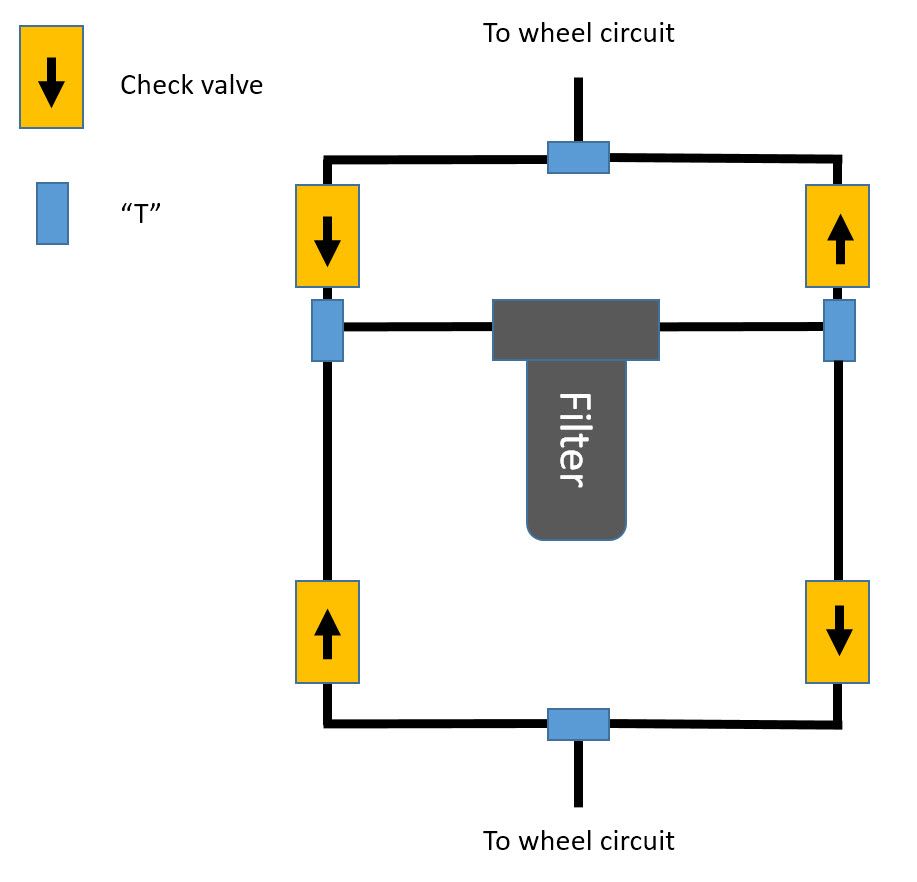OP
Poorman1234
New member
Thanks for all the comments and the good thoughts.
When I had everything open, it looked as clean as can be, including the oil. I theorize that the oil in the wheel loops has been filtered as of late. Although the design does not call for this, and when working correctly, does not filter, I have been getting substantial filtering in the wheel loops because of the tram pump leakage.
I reason this: As the tram leaks pressured oil discharging from the tram pump pistons to its case, it returns to tank via the filter. The tram then makes up for this leaked oil with fresh oil from the tank via the charge pump in the tram pump case. I estimate that for the last year, as I drove, anywhere from 10 to 20 percent of the returning oil from the wheel loop went back to tank while new oil took its place.
I would guess that the oil in the tram wheel loops has changed over hundreds of times in the last year due to the leakage as I drove. It is the only way I can account for the complete and total lack of any signs of foreign matter in the wheel motor loops and the presence of oil that exactly matches tank oil in color and texture.
I was trying to figure a way to replace this oil prior to tearing it apart but came to the conclusion (mostly due to my observations), it was not necessary. Further, my pumps leakage was primarily caused by failure of the spring piston holder that tensions the pump cylinder against the valve plate within the pump. This would account for the leakage and facilitate transfer of oil from the tram wheel loops to case and the need for extra make-up oil.
Your posts above are appreciated.
When I had everything open, it looked as clean as can be, including the oil. I theorize that the oil in the wheel loops has been filtered as of late. Although the design does not call for this, and when working correctly, does not filter, I have been getting substantial filtering in the wheel loops because of the tram pump leakage.
I reason this: As the tram leaks pressured oil discharging from the tram pump pistons to its case, it returns to tank via the filter. The tram then makes up for this leaked oil with fresh oil from the tank via the charge pump in the tram pump case. I estimate that for the last year, as I drove, anywhere from 10 to 20 percent of the returning oil from the wheel loop went back to tank while new oil took its place.
I would guess that the oil in the tram wheel loops has changed over hundreds of times in the last year due to the leakage as I drove. It is the only way I can account for the complete and total lack of any signs of foreign matter in the wheel motor loops and the presence of oil that exactly matches tank oil in color and texture.
I was trying to figure a way to replace this oil prior to tearing it apart but came to the conclusion (mostly due to my observations), it was not necessary. Further, my pumps leakage was primarily caused by failure of the spring piston holder that tensions the pump cylinder against the valve plate within the pump. This would account for the leakage and facilitate transfer of oil from the tram wheel loops to case and the need for extra make-up oil.
Your posts above are appreciated.
